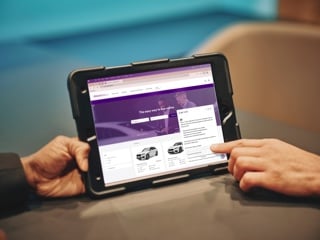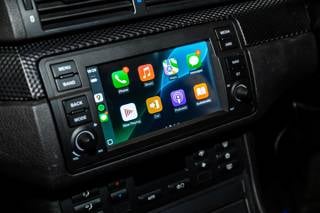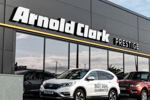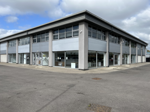By Richard Yarrow
Emails are easy to ignore, particularly if they’re trying to convince you to send money to a friendly Nigerian prince or buy drugs to improve your, erm, performance. But if you work in retail and they’re genuine enquiries from potential customers, why leave them unanswered?
NEED TO KNOW |
|
| ♦ One third of dealers failed to respond to email queries within four hours | |
| ♦ Better training, recruitment and management awareness needed | |
| ♦ Lack of product knowledge may hinder outsourcing of digital enquiries | |
Don’t think it’s an automotive industry problem? Earlier this year, a ‘mystery shopper’ survey of manufacturers and dealers by Auto Trader for its annual Click Awards found 50% of enquiries failed to get a response. Dealers did far better than the OEMs, with 66% of retailers responding to requests for test drives or information within four hours. More worrying was that just under a quarter of retailer enquiries were left unanswered. The issue was no better with ‘live chat’ on dealers’ websites. Only 10% of those contacted responded to a request about carrying out a test drive.
Nathan Coe, group director of Auto Trader, said how a business manages leads can be the difference between making a sale or not.
“Response times may not seem that important but failure to act in a timely manner is an easy way to deter any potential customer,” he said. “Technology is only an effective solution if used properly. For an industry that should have a focus on customer service, these figures really aren’t good enough.”
Is four hours too long to wait in the age of instant communication?
Some questioned whether four hours was the right measurement. Andy Teale, managing director of Fastrack Automotive, a supplier of vehicle sales solutions, said: “Taking it away from online, if I’d phoned a dealership and asked for a call-back, I’d be pretty disgusted if it didn’t happen in four hours.”
Why are so many car dealers poor at digital lead response? Are they not adapting to the modern world? Is a culture change required? What processes, incentives and/or systems can be put in place to get better return on investment for the dealer’s marketing spend?
Jeremy Evans, managing director of Marketing Delivery, which provides email and phone customer relationship management systems, including SmartMail, said he believed there were two key causes, and the first involved recruitment and training: “Typical dealer sales staff are not experienced at dealing with multiple online lead sources. Traditionally, they have been employed for their one-to-one people skills.” Evans said the most successful dealerships were the ones hiring specific digital sales executives.
“The other issue is one of management awareness. With a client such as Cambria Automobiles, we put in place a process using SmartMail to follow up online leads regardless of what the dealership did. Any customer responses to these were seen by the directors, who took a dim view of those where the enquiry hadn’t been dealt with. That’s a very sure way to improve things!”
Delivering the right message at the right time
The Cambria case study illustrates how technology can help. Dealerships automatically send copies of their web enquiries to Marketing Delivery and it generates follow-up emails 24 hours later to ask customers how they were managed.
Ian Godbold, Cambria Automobiles marketing director, said the initiative had led to big improvements, but that this was still an Achilles’ heel for the industry.
“Our target for a response is now two hours with a reduction to one hour in due course,” he said. “I’ve got some dealers who are targeting 15 minutes, but I’ve also got ones who are outside the two hours.”
Godbold said he recently watched a video about a US company working in the sector. It said anyone responding to digital requests from potential customers should forget about two hours and even one hour. “It said if you’re not going back to your consumer instantly you will lose them to another website.”
Cambria installed SmartMail four years ago. “Today, every enquiry into the business gets put onto a lead management system, which allows us to build a prospect database,” explained Godbold. “The consumer will get a follow-up 24 hours later asking how their search is going, but also asking how did we do and is there anything we can help with. A similar thing happens at 72 hours and then 14 days. It’s amazing at that point how much business you can resurrect, where the consumer might have gone away or been distracted.”
It shows digital lead management isn’t just about the instant response, but continuing to engage with the customer to build a rapport.
“Yes, the focus is getting back to them quickly, but that’s just the start of the journey,” said Godbold. “On the sales side it’s a big win for us, and on aftersales the reminders we send out get the highest response rate. It’s about delivering the right message at the right time.”
Auto-response emails are a popular way of getting that fast reply, but they’re only a stop-gap solution. Darren Bedford, sales director at Symco Training, which works with staff in-dealership to improve their skills, warned that the ‘thanks for your enquiry’ reply could actually be damaging to the perception of a business if not followed up with a personal note.
“A customer’s experience with other online retailers is instantaneous, so they expect a quick response,” he said. “The faster it is, the bigger the wow, but the longer you take, it can have a negative impact.”
All dealerships will have defined showroom processes. But with the opportunity coming from multiple digital channels and a degree of duplication, things are more complicated. For example, the idea of a lead coming into a single point – the sales manager’s inbox, say – means if that person isn’t at their desk, the process instantly fails. The problem is solvable and Andy Teale said it needed a combination of people, processes, systems and management.
“Some dealers have admitted they’re not good at it so they’ve given it to a central contact centre,” he added.
That approach needs people who know about the product and the risk is it could cause more problems. For example, if it’s a dealer group that represents different brands, contact centre staff need to be able to access the right information quickly to give a good experience to the customer.
Teale continued: “A further point is ensuring these people have good enough written skills and attention to detail to communicate with the customers. They also need the capability to place that enquiry in the showroom with all the required information, so people there are aware that a customer is booked in at a certain time to test-drive a specific car.”


















Login to comment
Comments
No comments have been made yet.